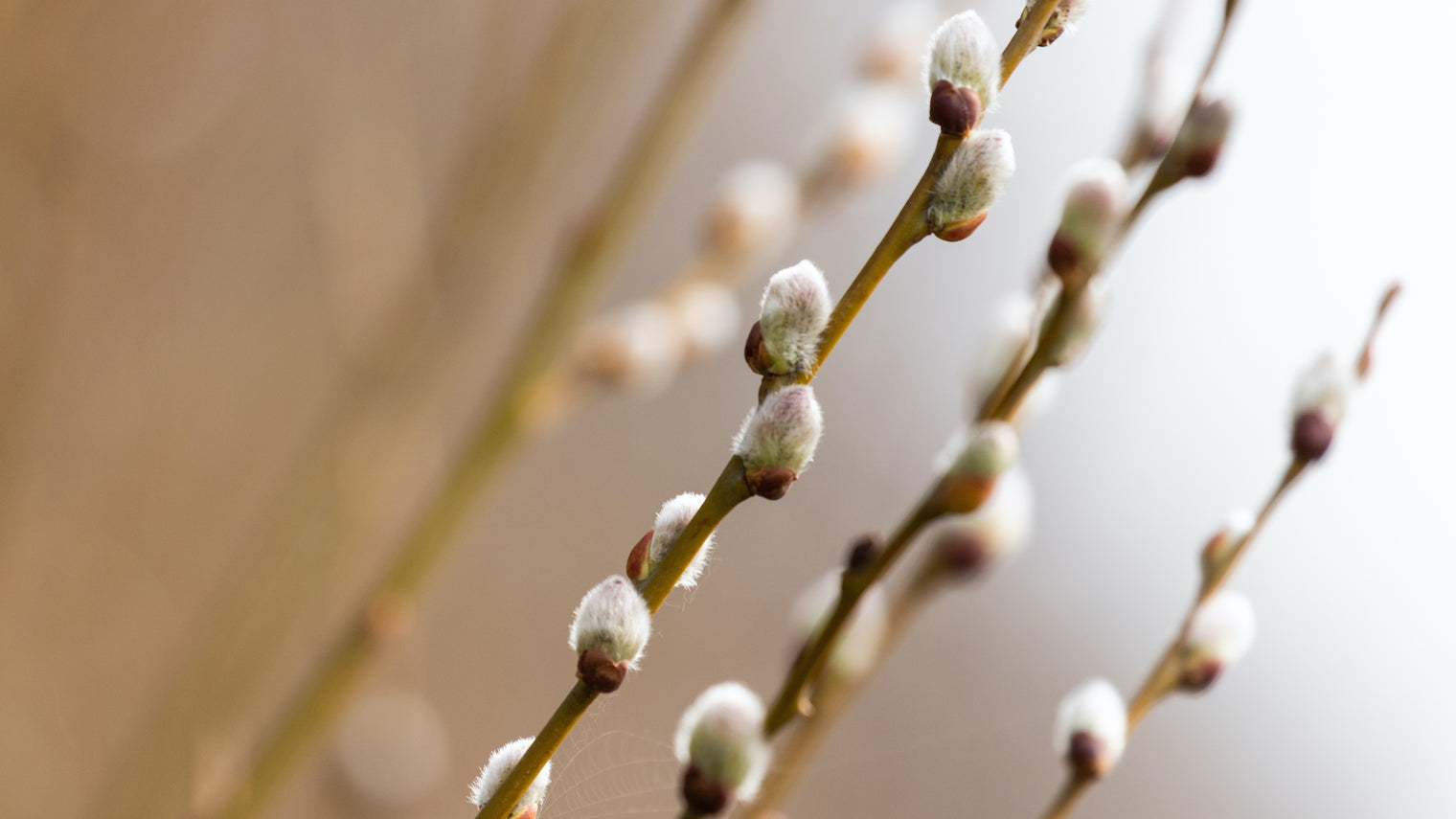
From furniture to medicine, from dye to rope, the Willow Tree has many uses and a rich history with ties to folklore and mysticism. It covers a varied range of tales and legends perhaps because the species is so varied. Some of these tales relate to white willow, others weeping willow. Whatever the variety, it’s a beautiful tree. The symbolism of the Willow Tree gives us a sense of hope, a sense of belonging and safety, and the ability to let go of the pain and suffering to grow new, strong and bold just like Willow.
In Ancient Greece, Hecate- the powerful Goddess of the Underworld, who taught sorcery and earth medicine was linked to the moon and to Willow. Zeus’s nurse was named Helice which means “Willow” and she was also associated with water. Her priestesses used willow in their water magic and earth medicine. The willow muse was called Heliconian (after Helice) and was sacred to poets. Willow is often linked to the moon, water, poetry, magic and music. The Greek poet Orpheus carried willow branches on his adventures in the Underworld. Apollo gave him a lyre, and it is interesting to note that harps (including the Highland harp) were often carved from willow.
Willow is favored as the best tree to make divining rods and people once tied a sprig of willow around the churn so the fairies couldn’t steal the butter.
There are many explanations given for why it was given the name “weeping willow”. In Italy people believed the willow wept due to the weight of angels’ tears shed for Adam and Eve. Yet many believe the willow weeps due to a line in Psalm 137:
Whatever the origination of that name one resonates with, during the 16th and 17th centuries the association became particular to grief suffered by forsaken lovers. As willow flowers are supposed to alleviate bitterness, there was a custom of breaking up with someone by sending them a willow garland to be worn by the rejected. By the 19th century illustrations of weeping willows often appeared as ornaments on gravestones and mourning cards. Willow boughs were also used to decorate British churches on Palm Sunday instead of palm leaves.
It’s extremely industrious in its utility in textiles and building materials. The bark is fibrous and pliable – ideal for making rope. On the Outer Hebrides people made anchor ropes from willow bark. Our hunter-gatherer ancestors made shelters with bent willow frames as well as dugout boats and coracles. Highlanders also used bark strips to tie down thatch on roofs and it has even been used to make cloth. Willow’s ability to absorb shock without splintering is why it is still to make cricket bats and stumps. The Dutch traditionally make their clogs from willow wood and the Celts made their chariot wheel spokes from it. Gypsies also used willow to make their clothes pegs. People used the bark to make a reddish-brown dye, for tanning leather and as fodder for livestock.
Of course Willow is extremely well-known for its use in making wicker. This involves weaving stems to create all sorts of useful items. Before the advent of plastics, willow was widely used to make a variety of containers. These included baskets, coffins, lobster pots (creels) and beehives. A 6th century willow basket from Shetland showed the same weaving techniques as those practiced today. It has also been used for house building, charcoal manufacture and more.
Willow bark extract has been used in herbalism for thousands of years as an anti-inflammatory, antipyretic (fever reducer), and analgesic (pain reliever). Legend has it that willow bark was commonly used during the time of Hippocrates, when people were advised to chew on the bark to relieve pain and fever.
The active ingredient in willow bark is salicin, but the accompanying flavonoids and plant particles might also be a part of what make willow bark effective.The salicin inside willow bark works much the same way as aspirin so it is often used as a fever reducer and to ease pain and inflammation, including headache, muscle or joint pain, menstrual cramps, rheumatoid arthritis (RA), osteoarthritis, gout, and a disease of the spine called ankylosing spondylitis. When used on people with lower back pain, willow bark was found to be more effective than placebo in a recent herbal medicine review.
If you have an allergy to aspirin, it’s possible to have a reaction to willow bark as well. Willow bark can also interact with certain medications, like blood thinners and beta-blockers. As always, check with your doctor or medical practitioner before use.
White willow bark is a great natural alternative to the more harsh pain relievers out there such as NSAIDS and prescription pain medications. It’s anti-inflammatory effects make it great for boosting circulation as well. Check out Khroma’s Vigor for the BEST herbal circulation support available on the market!


